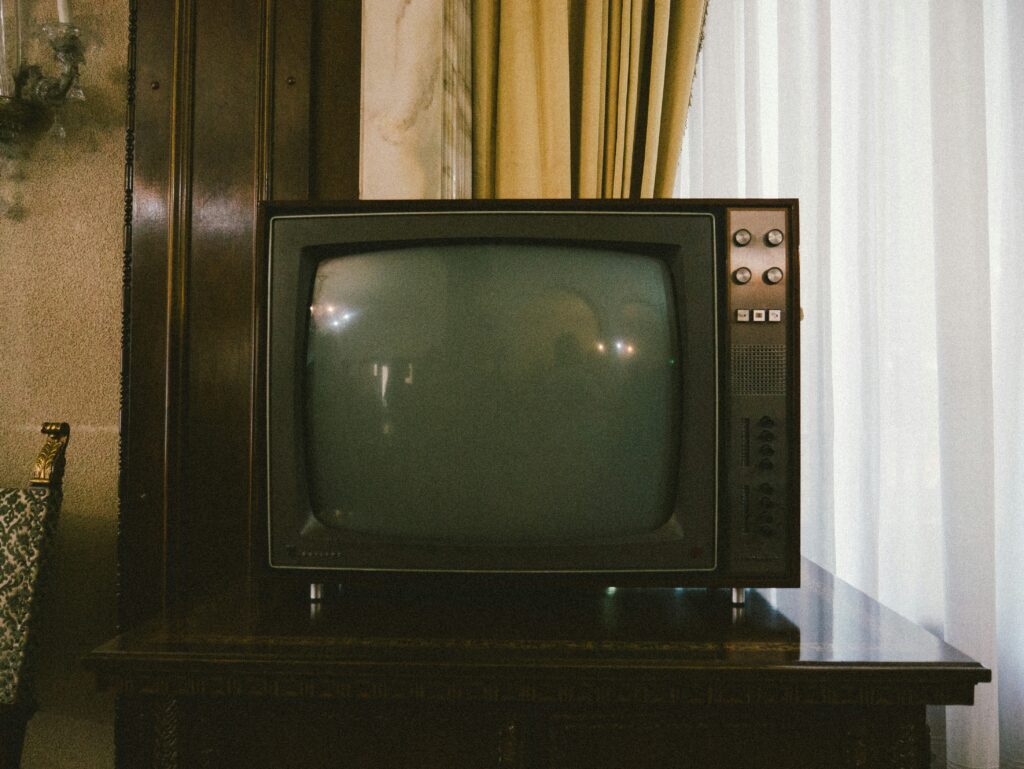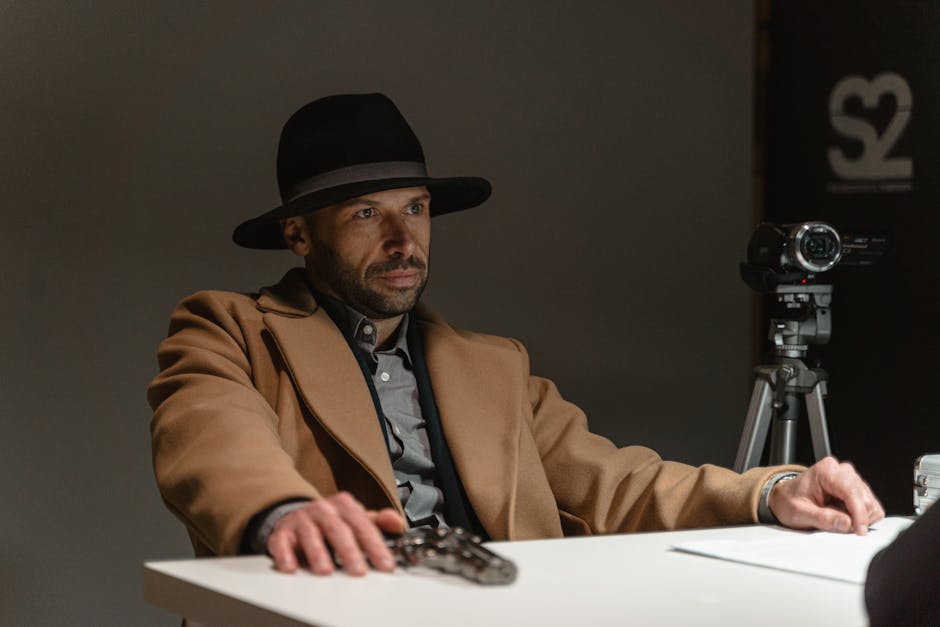Introduction: Why Great TV Still Matters
Television is in the midst of a creative renaissance—one that has redefined how stories are told and consumed. What was once considered a lesser form of entertainment has evolved into a platform for bold, complex, and emotionally gripping narratives.
A Renaissance in Storytelling
Television is no longer confined to episodic formats with predictable arcs. Today’s best series rival novels in narrative depth and rival films in visual execution. This renaissance is driven by:
- The rise of showrunners with creative control
- Expanded budgets and cinematic production techniques
- Streaming services that allow for risk-taking and diverse formats
When TV Surpasses Film
While blockbuster films still dazzle with spectacle, television excels at emotional investment and narrative longevity. Serialized storytelling allows for:
- In-depth character development over multiple episodes or seasons
- Slow-burn narratives that explore themes at greater depth
- A more personal and immersive viewing experience thanks to time spent with characters
What Makes a “Must-Watch” Series Today?
In the golden age of TV, a few key elements define shows that rise above the noise:
- Narrative complexity: Twisting plots balanced with emotional clarity
- Character evolution: People you grow with, root for, or fear
- Cultural relevance: Timeliness without sacrificing timelessness
- Ambition: A willingness to take creative risks, both in form and subject matter
The result is a landscape where television matters—where it challenges, reflects, and sometimes redefines the cultural moment.
Hallmarks of a Critically Acclaimed Series
What makes a television series rise above the rest? Critical acclaim isn’t earned through hype alone—it requires substance, craft, and impact. The best shows today blend multiple elements that elevate them from simple entertainment to cultural cornerstones.
Strong Narratives and Character Development
Great series are driven by storytelling that respects complexity and character arcs that reward attention over time. Audiences aren’t just watching events unfold—they’re emotionally invested in characters who grow, falter, and surprise us.
- Consistent pacing and thematic depth over multiple seasons
- Characters who evolve in believable, engaging ways
- Subplots that serve a larger narrative purpose
Cinematic Production Values
Modern series often match (or even exceed) film-level visuals and sound design, delivering grandeur in the comfort of our homes.
- High-end cinematography, costume design, and original scores
- Directors and writers often drawn from feature film backgrounds
- Big-screen experiences presented in serialized formats
Cultural and Emotional Relevance
The most celebrated series strike a chord with the current moment—or ask timeless questions that never lose importance.
- Tackling social issues with nuance and urgency
- Reflecting political tensions or historical traumas
- Offering emotionally resonant themes: identity, justice, belonging
Critical vs. Audience Reception: The Full Picture
A show’s longevity and influence depend on both critical endorsement and audience resonance.
- Critics bring attention to artistic merit and innovation
- Audience feedback ensures cultural stickiness and long-term value
- The best series usually bridge both: prestigious and beloved
Whether it’s HBO’s literary-style dramas or global Netflix hits, the common thread is clear—exceptional series build with care, reward repeat viewing, and sit at the intersection of artistry and relevance.
Succession (HBO): No show in recent memory has dissected power quite like Succession. It’s a brutal character study dressed in luxury and fueled by razor-sharp dialogue. From boardroom betrayals to birthday meltdowns, every episode crackles with tension. But it’s not just about business—it’s about broken people trying to win a game they don’t even like. The performances are uncompromising, especially Jeremy Strong’s slow unravel as Kendall Roy. It’s prestige TV at its most cutting.
The Bear (FX): Chaos wears a white apron. The Bear drops you into the pressure cooker of a Chicago kitchen and never lets up. It’s not polished or clean. That’s the point. The tension feels lived-in, and every episode nudges the characters (and you) closer to the edge. What makes this show stand out isn’t just the explosive moments, but the quiet ones—grief, hope, grit. The creative rhythm leans into failure, then builds from it.
Better Call Saul (AMC): This show pulled off what almost never works—it made a prequel essential. Better Call Saul didn’t just expand a universe. It deepened it. Watching Jimmy McGill turn into Saul Goodman is a slow-motion tragedy that hits harder than expected. The writing is patient, the visuals cinematic, and the emotional weight rivals (and sometimes outdoes) Breaking Bad. It’s a masterclass in character work, plain and simple.
The Crown (Netflix): More than just a royal biography, The Crown is a reminder that history is often scripted by silence and stature. It dramatizes monarchy with surprising intimacy and surgical precision. While the sets and costumes are immaculate, it’s the personal unravelings—private doubts behind public smiles—that stick. Whether it’s Elizabeth’s restraint or Diana’s unraveling, this show unpacks power through quiet moments that echo loud.
Breakthrough International Shows
Dark (Germany, Netflix): Complex timelines done right
“Dark” didn’t just play with time—it bent it, broke it, and rebuilt it. Where other shows fumble with non-linear storytelling, this German mind-bender set the bar. Dense with characters, family trees, and paradoxes, it refused to dumb anything down. If you blinked, you missed three generations and a wormhole. But for those who stuck with it, the payoff was precision. It’s one of the rare series that trusted its audience to keep up—and rewarded them for doing so.
Money Heist (Spain, Netflix): High-stakes storytelling with global impact
“Money Heist” knew drama. Dressed in red jumpsuits and Salvador Dalí masks, it played out like a long chess match spiked with adrenaline. What started as a Spanish sleeper hit became a global phenomenon thanks to its slick pacing, emotional stakes, and a cast of complicated, driven characters. It walked the fine line between rebellion and spectacle, keeping the tension high and the loyalties unclear. The world didn’t just watch—they picked sides.
Sacred Games (India, Netflix): India’s bold leap into noir crime drama
“Sacred Games” brought grit and mythology to the streets of Mumbai. It was sprawling, sometimes dizzying, but always ambitious. With its dual timelines, coded messages, and a doomsday clock ticking down, it packed crime, politics, and existential dread into every episode. This wasn’t Bollywood—it was sharper, darker, and pulled from real-world corruption and chaos. It proved India could do prestige TV—and do it loud, raw, and cinematic.
Series That Changed the Game
Some shows don’t just make noise—they shift the culture. “The Wire,” “Mad Men,” and “Breaking Bad” are more than critical darlings. They’re blueprints for how modern storytelling works across TV, film, and digital platforms.
“The Wire” stripped away the gloss of crime drama and delivered an unfiltered look at urban life, power structures, and American institutions. It wasn’t about one cop or one criminal—it was about the system. Its slow-burn pace and interconnected story arcs demand patience, but the payoff is layered, honest, and still painfully relevant.
Then came “Mad Men,” which made a show about advertising feel like a dissection of the American soul. Draped in mid-century coolness, it probed identity, gender roles, ambition, and insecurity. The period detail wasn’t just for show—it served the deeper narrative about people trying (and often failing) to reinvent themselves.
“Breaking Bad,” on the other hand, brought an edge. It was character first, spectacle second. Walter White’s descent didn’t just entertain—it challenged viewers to track a man as he transforms from meek to monstrous. It proved TV could be high-stakes and psychologically intricate, all without feeling bloated.
What ties these shows together isn’t just their critical acclaim—it’s how they’ve shaped today’s creators. You can see echoes of “The Wire” in everything from gritty true-crime docs to slice-of-life YouTube narratives. “Mad Men” made stylized period drama aspirational, influencing everything from indie film to fashion vlogs. And “Breaking Bad” taught creators that long-form storytelling thrives when the stakes are personal.
They changed what we expect from television. And for anyone creating content in 2024, their lessons—depth over noise, structure with intent, and character above all—are still essential.
Underrated Gems Worth Your Time
Not every great series gets the massive buzz it deserves. Some shows fly under the radar, only to be discovered by viewers years later—then passionately championed as hidden masterpieces. These underrated gems might not dominate headlines, but they offer storytelling, performances, and insights that rival (or exceed) more prominent titles.
Rectify (SundanceTV)
A meditative exploration of justice, trauma, and the human capacity for change, Rectify tells the story of Daniel Holden, released from death row after two decades. Rather than focus on courtroom drama or sensational plot twists, the series lingers in silences, emotional aftermaths, and the weight of memory.
- Focuses on emotional realism over plot mechanics
- Slow-paced but richly rewarding for patient viewers
- A profound portrait of rural America and personal redemption
Patriot (Amazon Prime)
Equal parts espionage thriller, offbeat comedy, and poetic tragedy, Patriot defies easy classification. It follows intelligence officer John Tavner as he fumbles through covert operations with music, melancholy, and missteps. The series is as likely to deliver a deadpan joke as it is a brutal takedown or existential reflection.
- Surreal tone blends humor and intense emotional beats
- Features intricate storytelling and recurring visual motifs
- A cult classic worth the investment
Halt and Catch Fire (AMC)
Set in the shadow of Silicon Valley’s rise, Halt and Catch Fire chronicles the lives of tech pioneers from the 1980s into the early Internet era. What begins as a show about computers slowly transforms into a deeply emotional tale of ambition, innovation, and human connection.
- Explores the emotional toll of invention and reinvention
- Critically praised for character development and thematic depth
- Built a passionate following after an initially quiet release
These series may not have broken viewership records or trending charts, but they embody the best of risk-taking, thoughtful television. If you’re looking for beautifully crafted stories that reward attention and introspection, don’t overlook these underappreciated classics.
Evaluating the Past to Understand the Present
Every masterpiece has roots. You don’t get Succession without King Lear. You don’t get Better Call Saul without the moral rot of film noir. Today’s most compelling TV series draw from classic storytelling—arcs built on conflict, stakes, transformation, and ambiguity. The old rules haven’t been thrown out; they’ve just been sharpened for a binge-hungry audience.
Modern shows still lean on the three-act structure. Anti-heroes echo Shakespearean tragedy, and dialogue-charged scenes owe debts to 1940s screenwriters who knew how to move plot and reveal character in ten hard sentences. This isn’t nostalgia—it’s foundation.
Looking back at old films clarifies what has always worked: character before spectacle, tension over chaos, style with substance. It also reminds creators what risk looked like when the industry was younger and leaner. That’s essential now as platforms flood with content and creators fight to carve out attention. Understanding what lasts gives modern storytellers the blueprint—and the nerve—to push forward.
For a closer look into the legacy of classic cinema and what it teaches today’s creators, read the full breakdown: Classic Films Revisited: Insights and Analysis.
Conclusion: The Golden Age is Evolving
Streaming didn’t just give viewers more options—it tore the gates off. What used to be locked behind network deals or DVD box sets is now a scroll away. With global access, a Norwegian thriller or Korean drama can sit beside a New York-based political satire. Borders are blurred, and great television speaks many languages. The audience is bigger and sharper than ever. No one watches in a vacuum anymore.
And here’s the catch: critical acclaim doesn’t only come from winning awards. It’s about landing impact and staying relevant long after the premiere. Shows like “The Wire” or “Mad Men” might not have swept every awards season when they aired, but they’re still dissected, rewatched, and echoed in today’s scripts. Longevity beats hype.
If you’re hunting for what’s next, don’t just follow the noise. Pay attention to the slow-burn shows, the ones that sneak up on you. A quiet revolution in TV rarely comes screaming through your feed—it hits deeper, lasts longer, and rewires how stories are told.


 Syvanna Kelricsona, co-founder of mediatrailspot blends her expertise in design, user experience, and emerging technology to deliver impactful content. She is passionate about showing how innovation in web and mobile platforms shapes the future of communication and creativity.
Syvanna Kelricsona, co-founder of mediatrailspot blends her expertise in design, user experience, and emerging technology to deliver impactful content. She is passionate about showing how innovation in web and mobile platforms shapes the future of communication and creativity.

